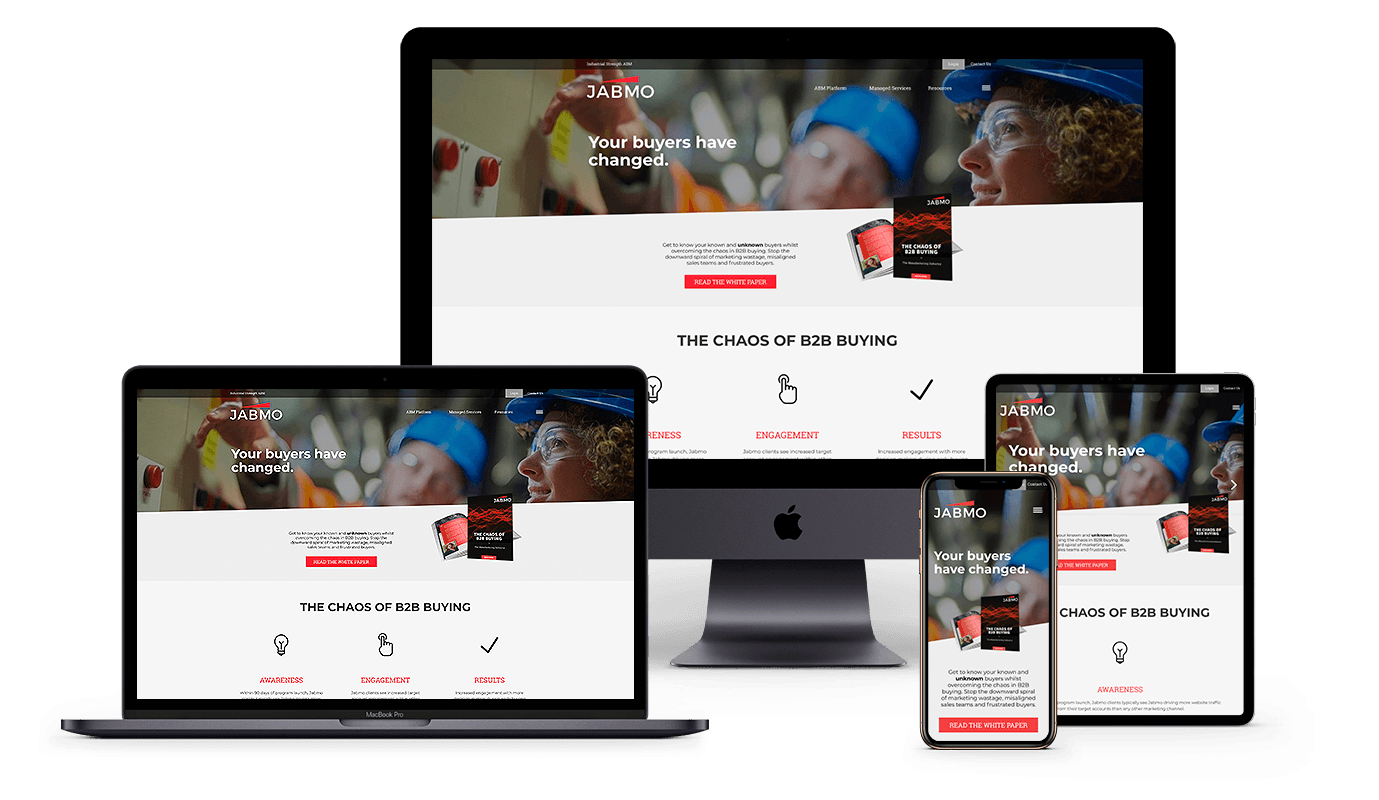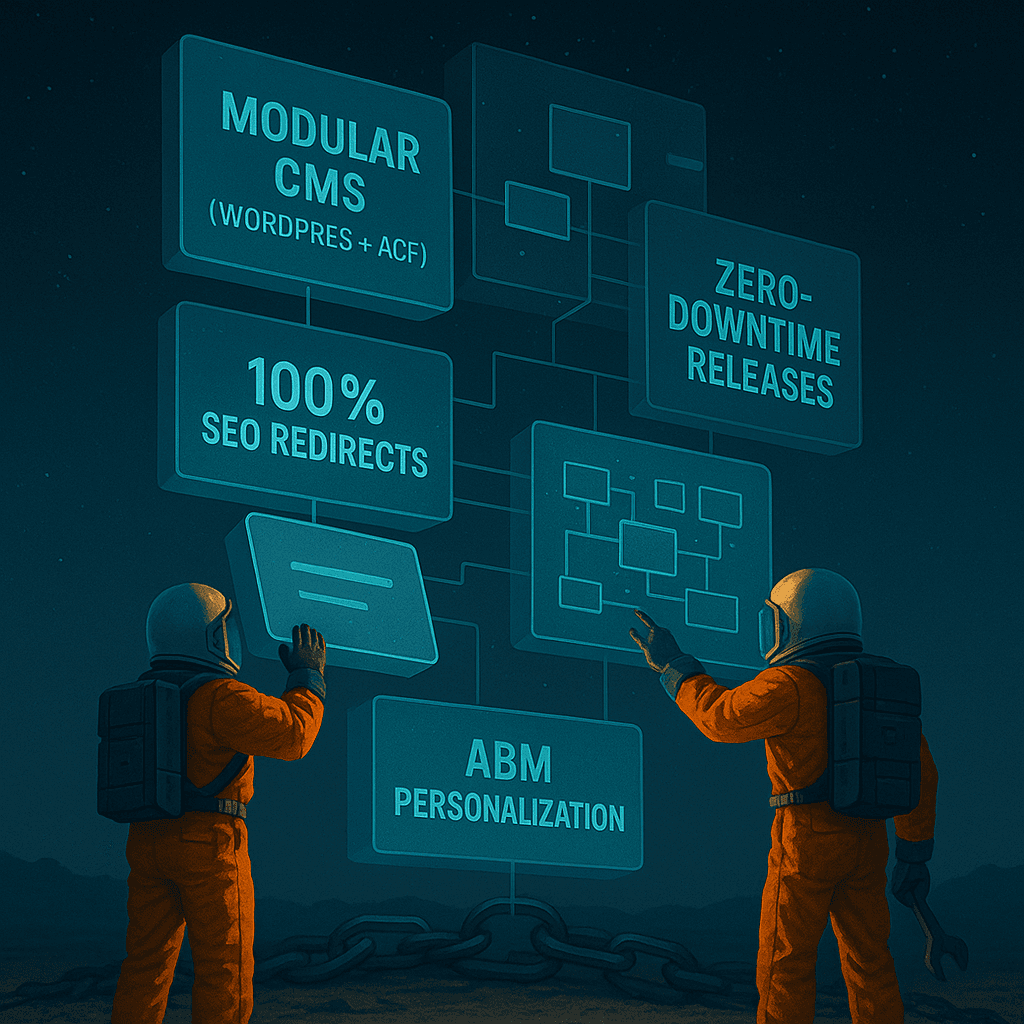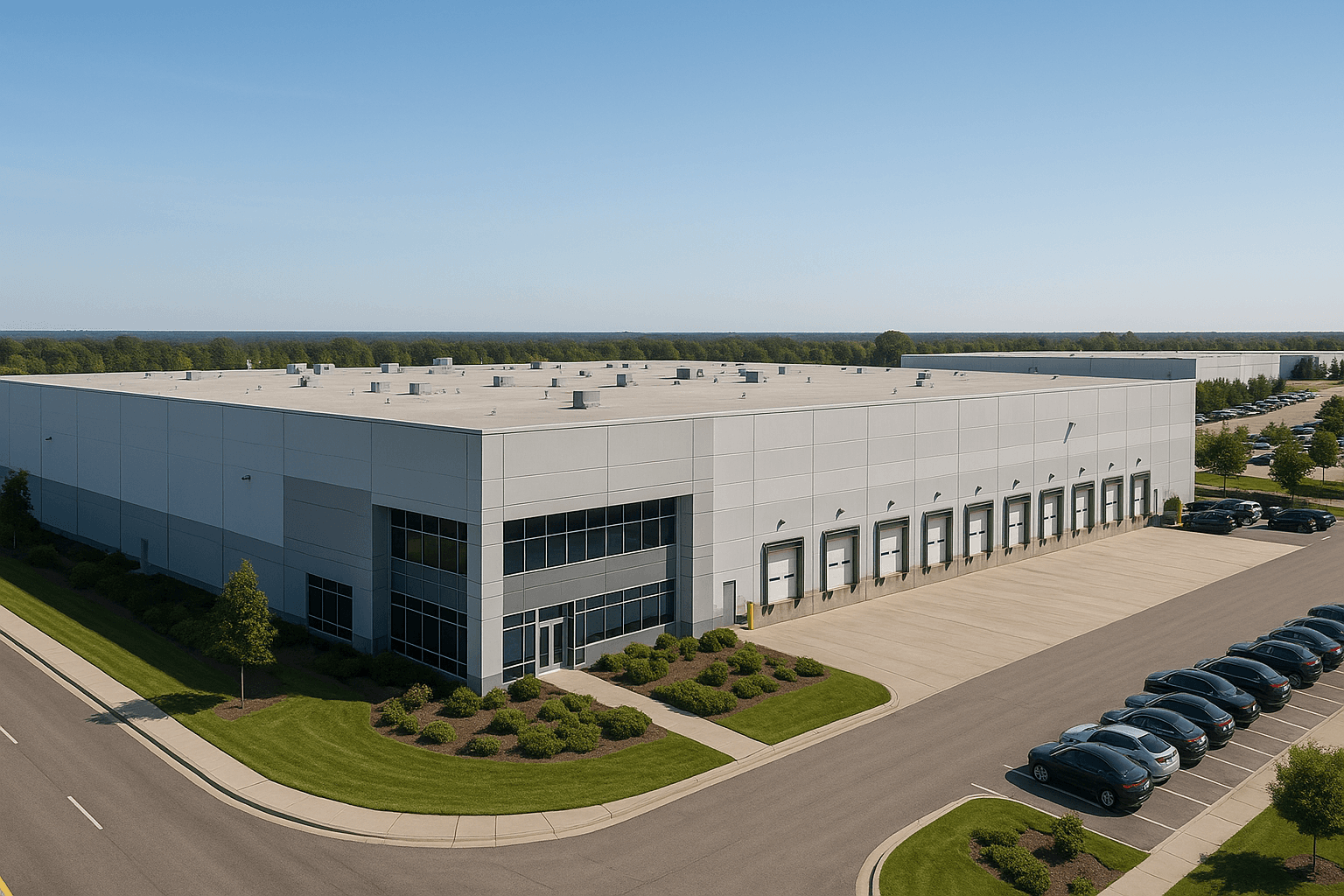Jabmo’s website moved from template limits
to a reliable, extensible CMS in 3 weeks
Custom WordPress + ACF with 100% modular CMS architecture, full SEO redirects coverage, IP‑based personalization, and zero‑downtime deployments.

Jabmo pioneered account‑based marketing (ABM) for industrial B2B, helping global enterprises identify and engage buying groups across key accounts.
The Challenge: Template lock‑in and risky migrations

Editors blocked by fragile CMS
Visual Composer made publishing fragile and slow
SEO continuity at risk
No personalization on a strategic ABM website
From premium template to purpose‑built platform
Jabmo needed a robust, componentized CMS that protected design integrity, preserved SEO, and enabled ABM personalization and future rebranding.
Our Approach: Modular CMS Architecture
We rebuilt on WordPress + ACF with a carefully designed component architecture, executed a full 301 mapping, integrated IP‑based personalization, and enabled zero‑downtime releases.
Deep Discovery
Analyzed legacy site structure, workflows, and SEO requirements to plan a safe migration.
Audited all URLs and content to plan comprehensive 301 redirects
Mapped editor workflows and documented Visual Composer pain points
Identified SEO risks and markup quality issues requiring cleanup
Strategic Blueprint
Designed technical architecture and partnered with a market-expert creative on brand visuals.
Information architecture mapping content structure for clarity and SEO
Component architecture design with ACF for safe, no‑code editing
Design collaboration with review cycles for key page templates
Migration strategy ensuring zero SEO loss and rebrand readiness
Theme & Component Development
Built custom WordPress theme with reusable ACF component library.
Custom theme development with clean, semantic markup and SASS
ACF component library enabling drag‑and‑drop page building
Initial theme ready ≤3 weeks enabling parallel content migration

Migration & Launch
Migrated content, implemented redirects, and launched with personalization.
Manual content migration fixing inline styles, broken links, and missing alt tags
Complete 301 redirect mapping for 100% SEO continuity
ABM platform integration for IP‑based homepage personalization
Zero‑downtime deployment pipeline for safe releases
Training, Support & Rebrand
Enabled team independence and coordinated future rebrand rollout.
Editor training workshops on components, publishing, and workflows
Ongoing technical support and optimization
Later rebrand rollout coordinated across all assets and redirects
The Outcome: Safe publishing and ABM‑ready foundation

From fragile templates to a reliable, extensible platform
Editors publish confidently without risking page layout or SEO
SEO continuity through complete 301 mapping and cleanup
ABM‑aligned personalization supports strategic account engagement
Component CMS. Zero downtime. ABM personalization.
We replaced Visual Composer with a componentized WordPress + ACF CMS, delivered SEO‑safe migration with complete redirect coverage, enabled IP‑based personalization via their ABM platform, and adopted zero‑downtime releases—setting Jabmo up for a smooth rebrand and ongoing evolution.
This case study is based on project documentation, migration checklists, and internal deployment notes.
Need a safe migration with zero SEO loss? Let’s talk.
Talk to a CTONo sales pitch. Just honest advice about your challenges.
Frequently Asked Questions
What CMOs ask about this rollout
Why move away from Visual Composer?
Visual Composer shortcodes made content fragile and hard to govern. We replaced it with a componentized WordPress + ACF setup so editors can update content safely without touching HTML.
How did you preserve SEO rankings?
We audited all legacy URLs, planned a full 301 redirect map, and cleaned inline styles, broken links, and missing alt text during migration—ensuring continuity and quality.
Did you implement personalization?
Yes. We integrated their ABM platform API to power IP‑based homepage personalization with website‑specific mappings configurable in WordPress.
How fast was the initial delivery?
The initial custom theme was ready in ≤3 weeks, which let content migration and testing run in parallel.
Was there downtime during releases?
No. We used a zero‑downtime deployment process so features could roll out without interrupting traffic.
Did you support a brand refresh?
Yes. The platform was architected for future brand changes, and we coordinated a 2018 rebrand across the site with appropriate redirects.
Still have questions? Let’s discuss your specific situation.
Talk to a CTO
He advises startups and writes about AI, security, and execution at grigor.com.

